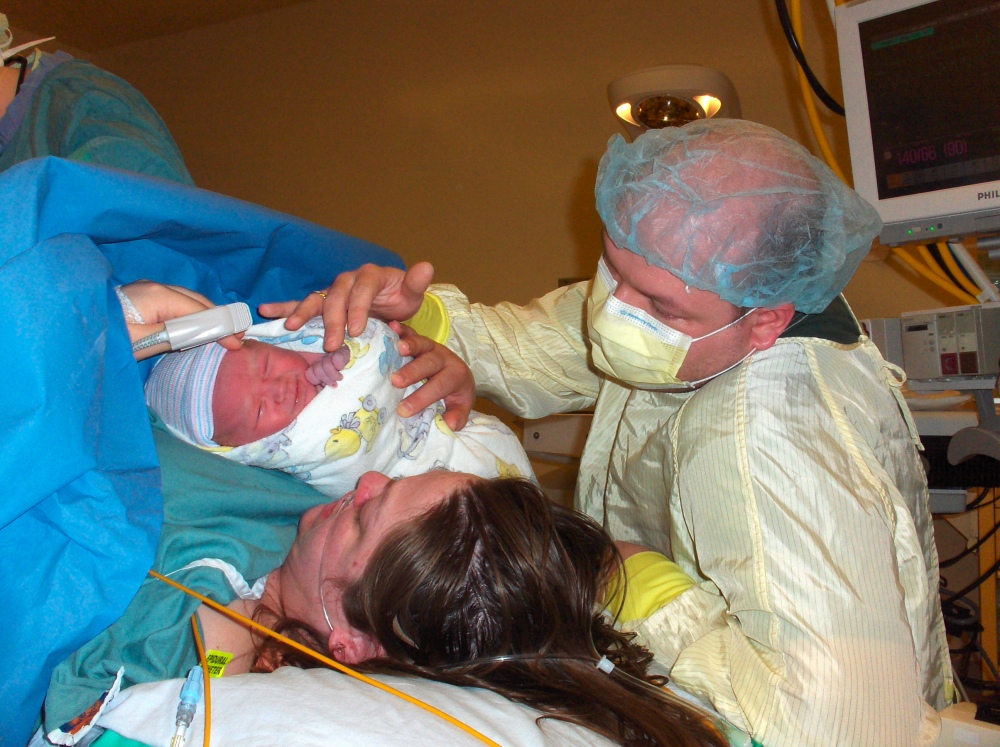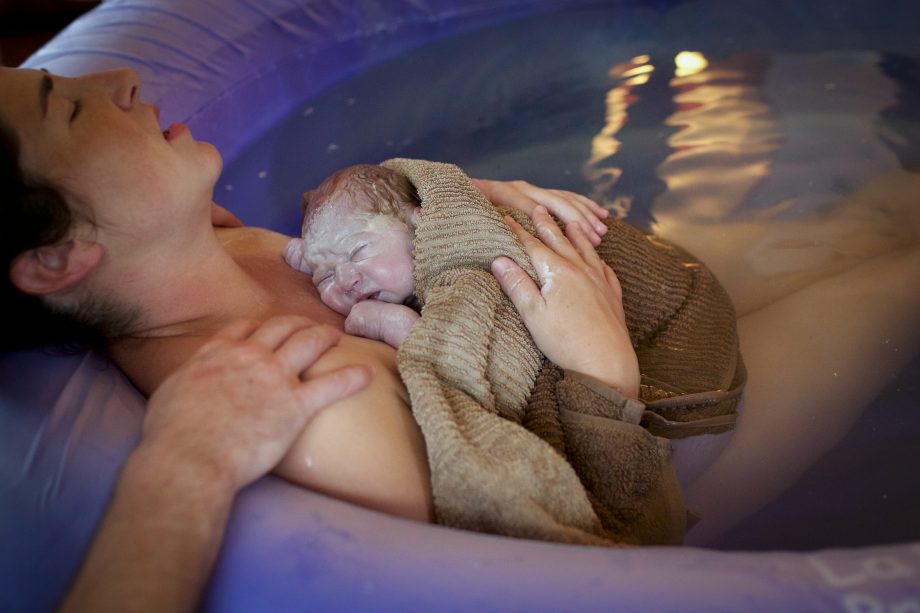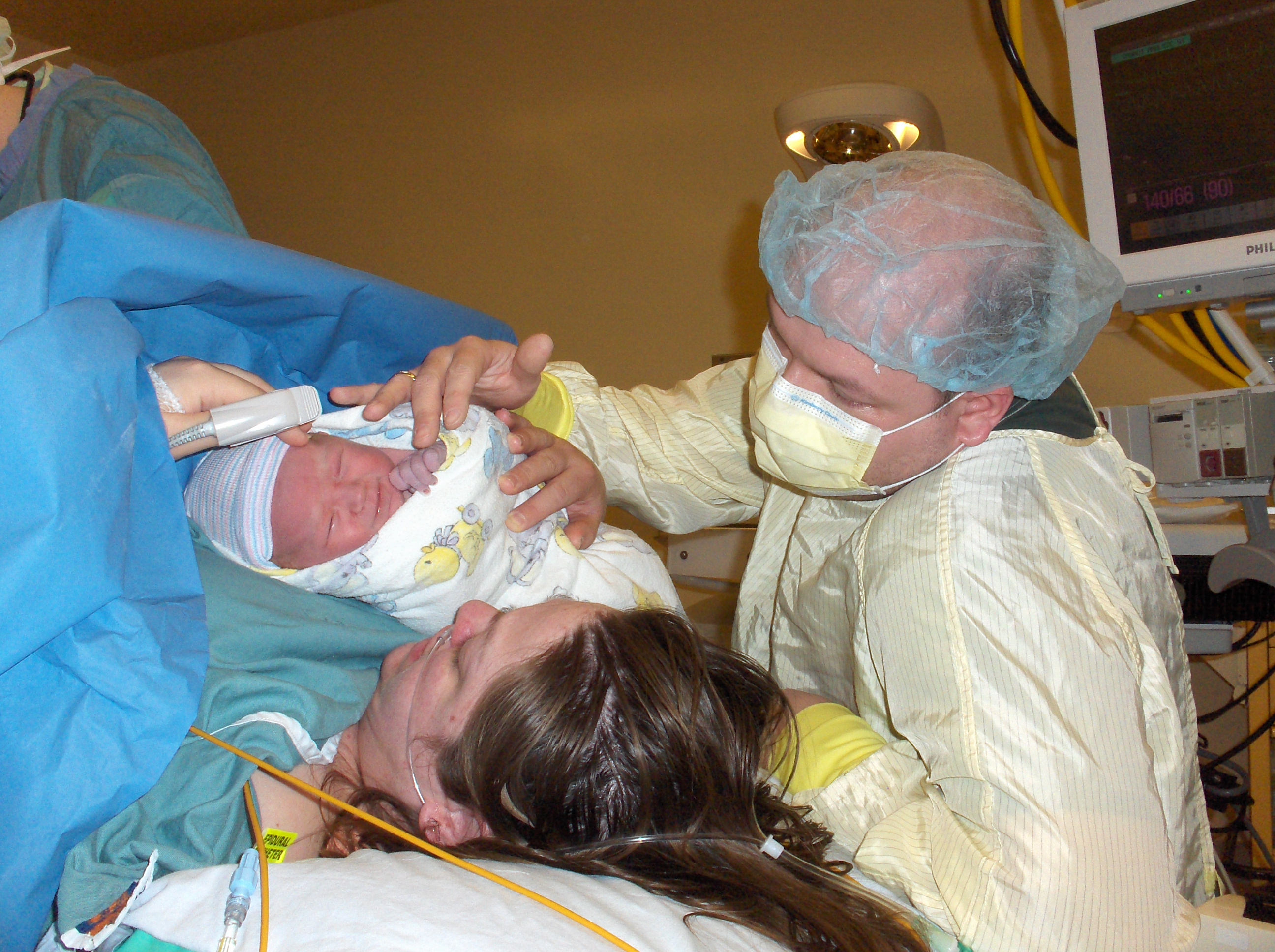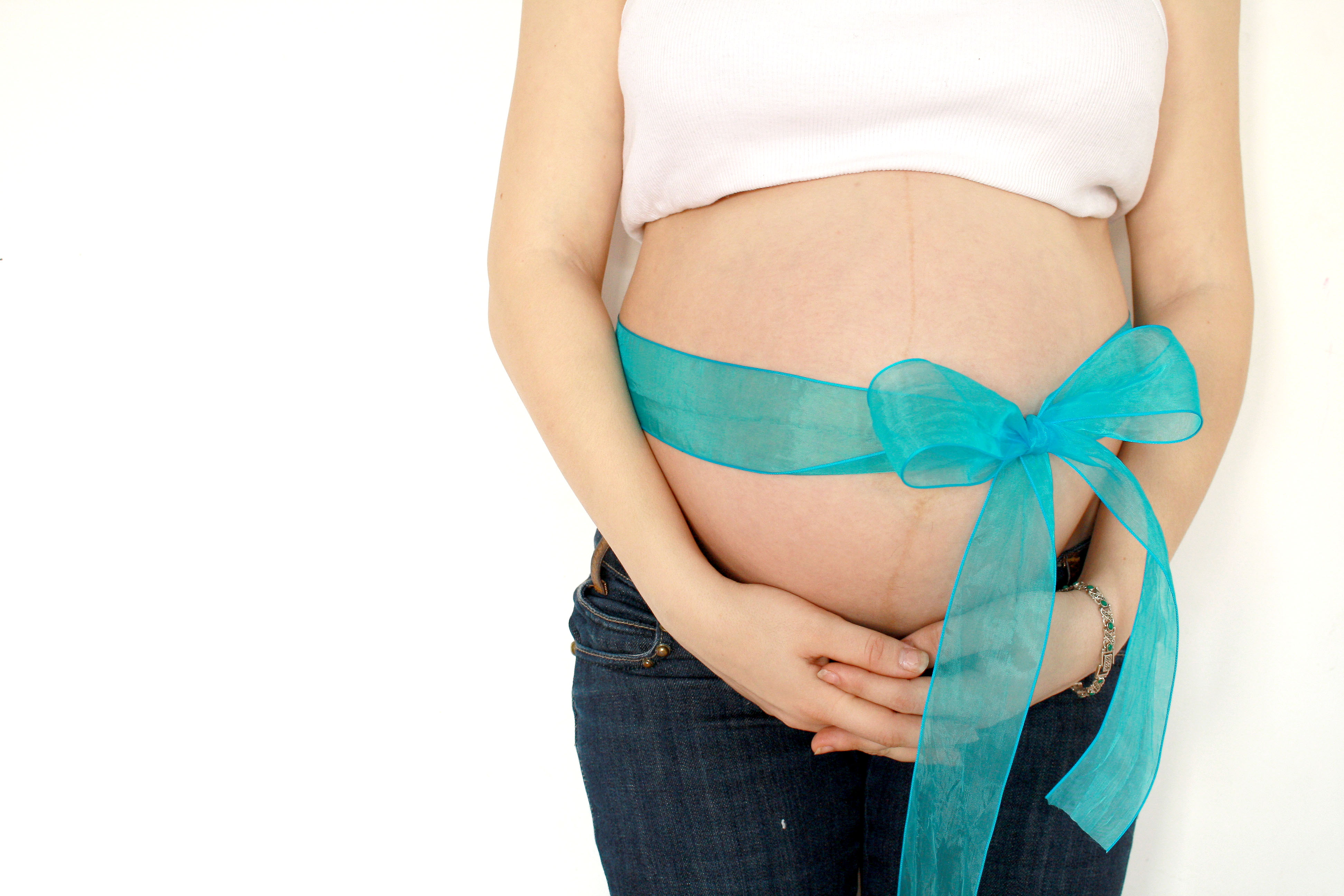 I have long been a supporter of natural birth, but even closer to my heart is humane, gentle, and loving birth. To me, the most important part to remember is that birth is a heart opening human experience and that the emotional and spiritual side of birth should get as much consideration as the physical side, because it is equally important. Today I came across an article that almost made me cry; in a good way.
I have long been a supporter of natural birth, but even closer to my heart is humane, gentle, and loving birth. To me, the most important part to remember is that birth is a heart opening human experience and that the emotional and spiritual side of birth should get as much consideration as the physical side, because it is equally important. Today I came across an article that almost made me cry; in a good way.  It’s a different approach to surgical birth in which the quality of the emotional experience for the parents and the baby are taken into consideration. A surgical birth is never the ideal situation, but when it occurs, this is how it should be done!
It’s a different approach to surgical birth in which the quality of the emotional experience for the parents and the baby are taken into consideration. A surgical birth is never the ideal situation, but when it occurs, this is how it should be done!
I hope this article moves you as much as it moved me.
Marie
ps. This video also does a wonderful job explaining it from a medical point of view and would be great to share with your care provider. [youtube=http://www.youtube.com/watch?v=m5RIcaK98Yg]
************************************************************************
Skin-to-Skin Caesarean – Gentle Surgical Birth
A British doctor is challenging convention to pioneer the ‘natural’
caesarean. Joanna Moorhead watched one baby’s slow and gentle arrival
Saturday December 3, 2005
The Guardian
The scent of lavender fills the air and classical music is playing quietly. On the bed, Jax Martin-Betts, 42, is calm, focused and in control. With the birth of her second child just minutes away, the midwife, Jenny Smith, is giving her a massage. Her husband, Teady McErlean, is whispering words of encouragement: just a tiny bit longer, and our baby will be in our arms!
It could be a natural birth at any maternity unit in Britain, but we are in an operating theatre at Queen Charlotte’s and Chelsea hospital inwest London, and the birth we are about to witness sounds a contradiction in terms: a “natural” caesarean section. Jax has been on the theatre table for half an hour, and the obstetrician, Professor Nick Fisk, has almost completed the incisions through her abdominal wall and into her uterus. “OK, the baby is about to be born,” he says. “Let’s prop you up so you can see him coming out.”
Smith removes the blue drape between Jax’s head and her belly, and the head of the bed is lifted to give Jax a clear view. Fisk cuts into the amniotic sac and a fountain of fluid rises into the air before he rummages around to locate the baby’s head. In a few seconds it comes into view, covered with the milky-white vernix that has protected it in the womb. For the next few moments, the atmosphere in the theatre is electric: Jax and Teady gasp in wonder at their new son, who is now
looking around, although his lower body and legs are still inside his mother’s uterus.
This groundbreaking approach to surgical delivery – Fisk calls it a “skin-to-skin caesarean”, or “walking the baby out” – has been pioneered by him partly in response to the rising caesarean rate, which according to recent statistics reached a new high at 22.7% (of deliveries in England, 2003-04). “Whatever your view on caesareans, for some women it’s always going to be the safest choice,” he explains. “And while couples having normal deliveries have been given more and more opportunities to be fully involved in childbirth, very little has been done to see how we could make the experience more meaningful for those having caesareans.”
As Fisk started to examine the conventions of surgical delivery, he was struck by how easily they could be challenged. Why, for example, did they need to be done so quickly, when slowing them down would give the parents more chance to participate in their child’s delivery and might give the baby a gentler experience of coming into the world? Why, too, was it so important for the parents to be screened off from the mother’s abdomen? And was it really essential for the baby to be whisked off for an immediate medical examination, rather than delivered into the arms of his mother?
“What I realised was that caesareans were done a certain way because they’ve always been done a certain way, but in fact they can be done differently – and in a way that parents love,” says Fisk. Other doctors are sometimes shocked when they hear what he is doing. “They say, but surely you have to get the baby out fast so she can get oxygen straight away? And I say, when the baby is being born she’s still attached to the umbilical cord and is still getting oxygen from the placenta. Caesarean birth can be gentle, just as vaginal birth can be gentle.
“Obstetricians are too hung up on getting from the point of incision to the birth of the baby as quickly as possible: that’s been the benchmark of a skilled surgeon. But I’m challenging that because, from the baby’s and from the parents’ point of view, it’s not very helpful.
“There’s also a view that because the baby’s chest hasn’t been squeezed going through the birth canal, there are greater risks of breathing difficulties. But by leaving the baby’s body inside the uterus for longer once the head is out, the body is squeezed and you see the lung liquid coming out of the baby’s nose. Unless there are other risk factors, I’ve never known a baby born by my method to have problems – going straight onto the mother’s chest helps regulate breathing.”
Smith, who works closely with Fisk, says it’s a hit with parents. “They feel more involved, which gives them a better start to family life. Breastfeeding is easier to establish, and you can see how much calmer the baby is.”
For Jax, the birth of Finn – who weighed 3kg 25g (7lbs 3oz) – was “spellbinding” .
“I had an emergency caesarean last time around. I’d wanted a natural water birth, but for some women it just doesn’t work. This was every bit as magical: seeing Finn there in my tummy was a sight I’ll savour for the rest of my life.”
How the baby Finn is born : Minute by minute
09.24 Our first sight of baby Finn comes as Fisk gently lifts his head through the incision in Jax’s abdomen. In a normal caesarean the baby would be lifted clear of the uterus immediately and the umbilical cord clamped and cut within seconds. The skin-to-skin caesarean gives the baby an experience of birth that is closer to a vaginal delivery. Instead of being pulled out quickly, Finn’s emergence into the world is slow and calm, and the cord remains attached for some moments. His body is being squeezed slightly by being still inside the uterus, which helps drain fluid from the lungs.
09.26 Fisk begins to lift Finn up out of the uterus. In a normal caesarean the focus would now be on the baby’s ability to breathe
unaided, as the umbilical cord would already have been cut. But in the skin-to-skin caesarean the cord is left intact for several minutes during the delivery, so the baby is still receiving oxygenated blood from the placenta. At this point, the birth has been so gentle that Finn still seems to be asleep. Instead of being pulled quickly out of his mother, Finn is able to acclimatise slowly to his new surroundings.
09.27 Finn is now beginning to make tiny spluttering noises and is becoming aware of the fact that his surroundings have changed
dramatically. At this moment, though, he is literally suspended between his old life in Jax’s uterus and his new life in the outside world. His upper torso is outside his mother, but his lower body and legs are still folded inside the womb. Officially speaking Finn is not yet born, as it is only when his body has fully emerged that he is deemed to be an independent being. Jax now has a clear view of Finn as his head is lifted up.
09.28 The moment of birth, as Fisk lifts Finn clear of Jax’s body. He will now hand him to Smith, centre, who will put him onto Jax’s chest. Keeping the operation site sterile is a crucial consideration in the skin-to-skin caesarean, and Jax and Teady are warned not to try to touch their baby until he has been handed out of the sterile zone by Fisk. Finn is now moving his arms around and his breathing is clearly audible. Babies born by caesarean are often crying at this point – which is traditionally welcomed as a sign that they’re breathing well.
09.29 Within seconds, Finn is placed on his mother’s chest for a cuddle. Studies show immediate skin-to-skin contact results in a baby who is less likely to cry, has a more stable temperature, is more able to regulate his own breathing and has better blood sugar levels. In a normal caesarean, Finn would now be on a resuscitaire table, crying and throwing out his arms and legs. The skin-to-skin approach means he can acclimatise slowly to the world beyond the womb: so far, he has not cried. Lying on Jax’s chest, hearing her heartbeat and voice, he is a picture of contentment.
http://www.guardian .co.uk/family/ story/0,, 1656246,00. html
<http://www.guardian .co.uk/family/ story/0,, 1656246,00. html>
Guardian Unlimited © Guardian Newspapers Limited 2006
*****************************************************************
If you are curious why I do not believe in unnecessary caesarean births, please watch the following youtube video which Ragan Cohen made as part of her Master’s project. It’s called Prevent Cesarean Surgery–and she covers the whole thing in five minutes flat–enjoy!





3 thoughts on “Skin-to-Skin Cesarean – Gentle Surgical Birth”
Thanks for sharing this information Marie. Being a Mom of 3 children born via c-section, it warms my heart that a gentler manner of birth is becoming an option. Hopefully this will be a choice available to families in the Regina area one day too.